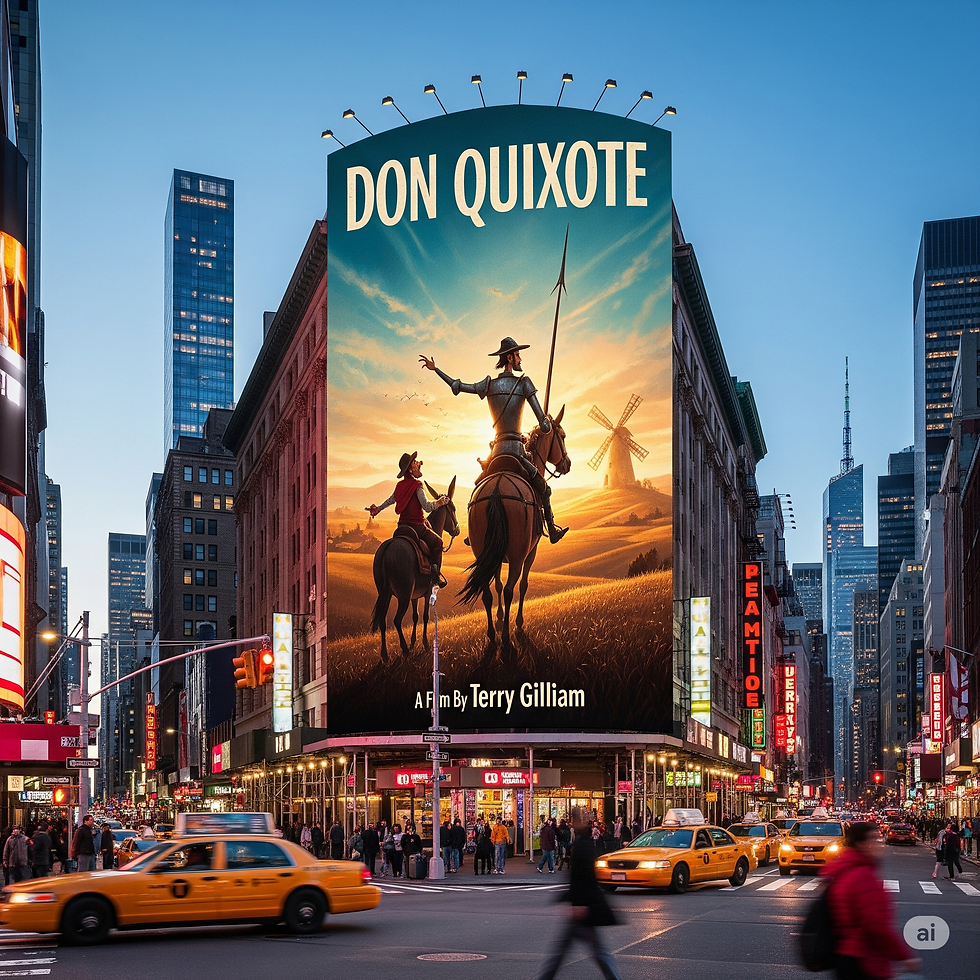An Introduction to Out-of-Home Marketing in Today’s Film Landscape
- Edoardo Ceron
- Aug 10
- 3 min read
Updated: Aug 17

In an era when a TikTok trend can outshine a million-dollar ad buy, indie filmmakers find themselves navigating a paradox: attention has never been more valuable — or more scattered. For most independent productions, the idea of competing with studio marketing budgets feels like trying to shout over a stadium’s worth of megaphones. But there’s a quieter, more surgical approach that still packs a punch: Out-of-Home (OOH) marketing.
Done right, OOH advertising doesn’t just announce a film’s existence — it places it directly in the daily rhythm of your audience. Whether it’s a bus shelter in front of an arthouse cinema, a mural on the wall of a local coffee hub, or a bold poster series that becomes a citywide scavenger hunt, OOH marketing offers something the algorithm never can: physical, unskippable presence.
What OOH Means in 2025
At its core, OOH marketing is any form of advertising that meets your audience when they’re not glued to a screen at home. Think billboards, transit ads, wildposting walls, pop-up displays, or even art installations.
In the current film market — where streaming platforms and digital pre-roll ads dominate — a well-placed physical campaign is almost rebellious. It cuts through the noise by stepping outside the feed and into the real world, where a film’s visual identity can breathe at full scale.
Costs vary wildly depending on scope:
Traditional billboards: $1,000–$15,000 per month depending on location and traffic volume.
Transit ads: $300–$3,500 for multi-week runs on buses, subways, or streetcars.
Local wildposting: as low as $5–$15 per poster site per week, making it one of the most accessible tools for indie budgets.
The point isn’t to replicate the saturation of a Marvel release — it’s to make every placement count.

Why Indie Films Should Care
Independent films live or die on targeted visibility. With theatrical windows shrinking and streaming algorithms favoring safe, mass-appealing content, indie titles need marketing that creates a sense of discovery.
OOH works because:
It’s tactile and real. Viewers encounter your film in the spaces they already inhabit — the subway ride home, the corner bodega, the art gallery district.
It’s memory-friendly. A strong poster design lingers far longer than a 3-second pre-roll on YouTube.
It’s controllable. No bidding against algorithms; you choose exactly where your story lives.
Who Creates, Who Calls, Who Prints?
Of course, great OOH campaigns don’t appear out of thin air. Someone has to design those striking posters, adjust them for every format — from a 24x36 subway panel to a 14-foot-high billboard — and make sure the specs are perfect for each vendor. Then there’s the less glamorous but essential work of contacting billboard companies, negotiating rates, booking print runs, and overseeing installation.
If you’re not a graphic designer — or a media buyer — that coordination can eat weeks of your time and still produce inconsistent results. This is where the indie filmmaker often burns out before the first ad even hits the street.
The Film Distribution Architect Advantage
As a Film Distribution Architect, I specialize in bridging that gap. I work directly with designers to create your key art, ensure it’s adapted to every required size and spec, and manage the entire vendor side — from billboards to bus wraps to wildpostings. One point of contact. One chain of communication.
That means you don’t have to chase printers, haggle with ad space providers, or learn the difference between CMYK and RGB at midnight before a deadline. You focus on your film; I focus on getting it into the streets, correctly and beautifully.
The Future Is Not Just Online
The temptation is to think marketing equals social media. But in today’s saturated feed economy, physical presence has renewed value. Indie films don’t have to play the same game as blockbusters.
They can be smarter, more personal, and more visible exactly where it matters most: in the lives of the audience they’re trying to reach.
OOH marketing isn’t about shouting the loudest — it’s about showing up in the right place, in the right way, at the right time. And for filmmakers willing to think beyond the usual tactics, it can turn a modest budget into a citywide conversation.


